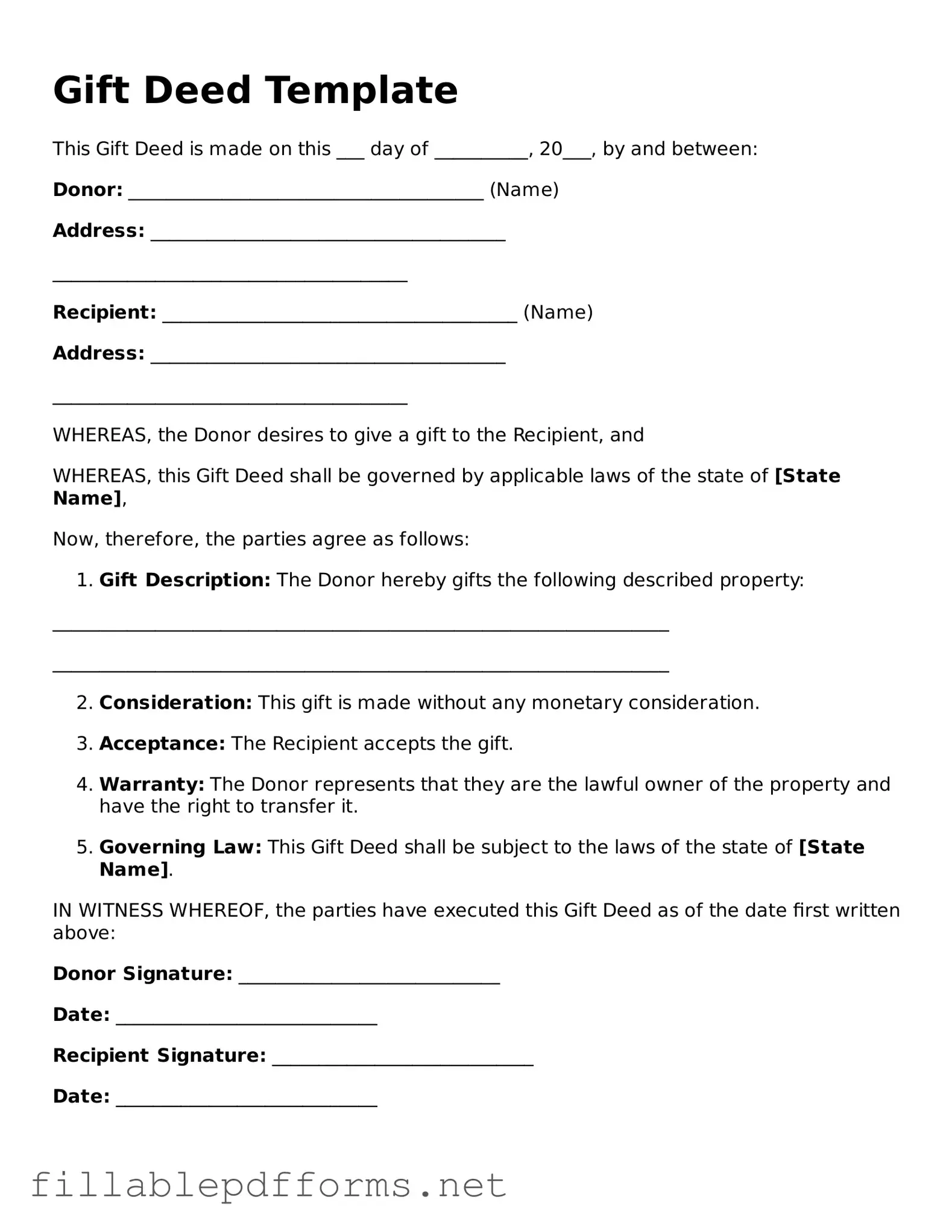When it comes to transferring ownership of property without the exchange of money, a Gift Deed serves as a crucial legal document. This form outlines the intentions of the giver, known as the donor, who voluntarily offers a gift to the recipient, or donee. Essential components of a Gift Deed include a clear description of the property being gifted, the identities of both parties, and the donor's declaration of their intent to make the gift. Additionally, the form often requires the signatures of witnesses to validate the transaction, ensuring that it meets legal requirements. Understanding the nuances of a Gift Deed can help individuals navigate the complexities of property transfer, whether it's for real estate, personal belongings, or other assets. It’s important to recognize that while a Gift Deed is generally straightforward, various state laws may influence its execution and enforceability, making it essential to be informed about local regulations. By grasping these key aspects, individuals can make informed decisions when considering gifting property to loved ones or charitable organizations.
